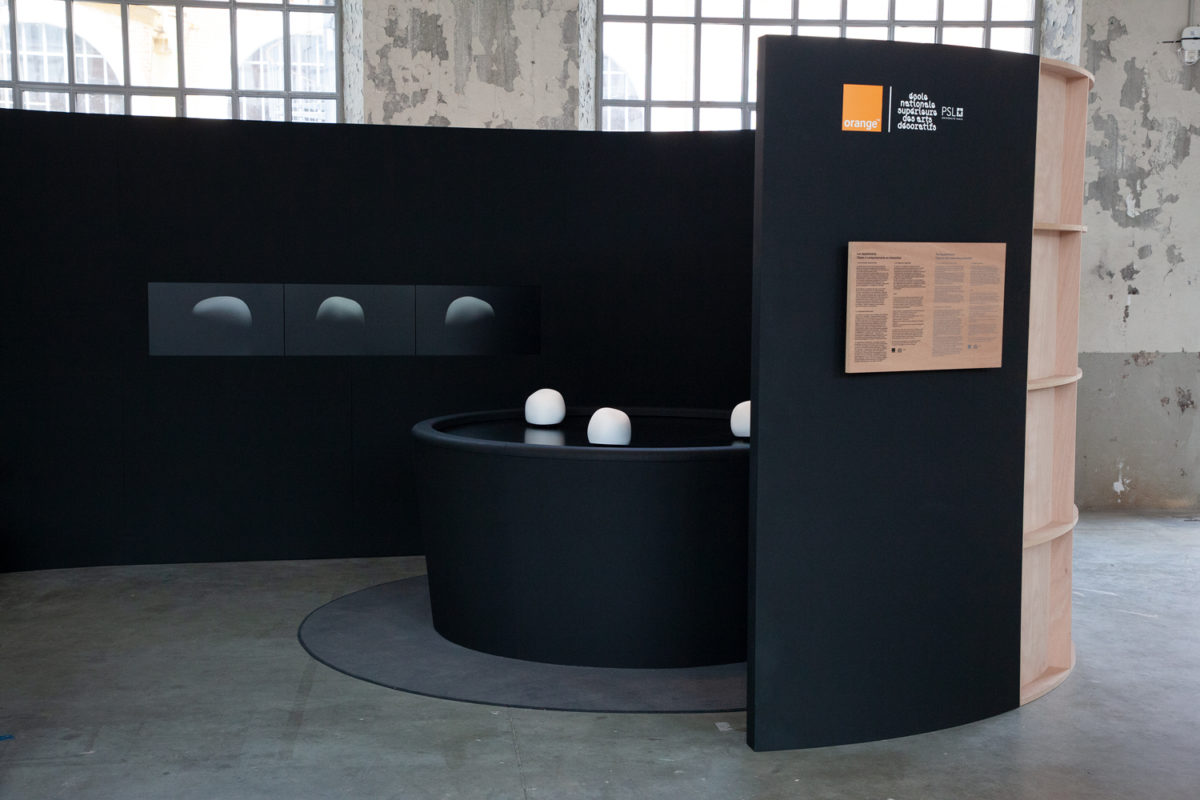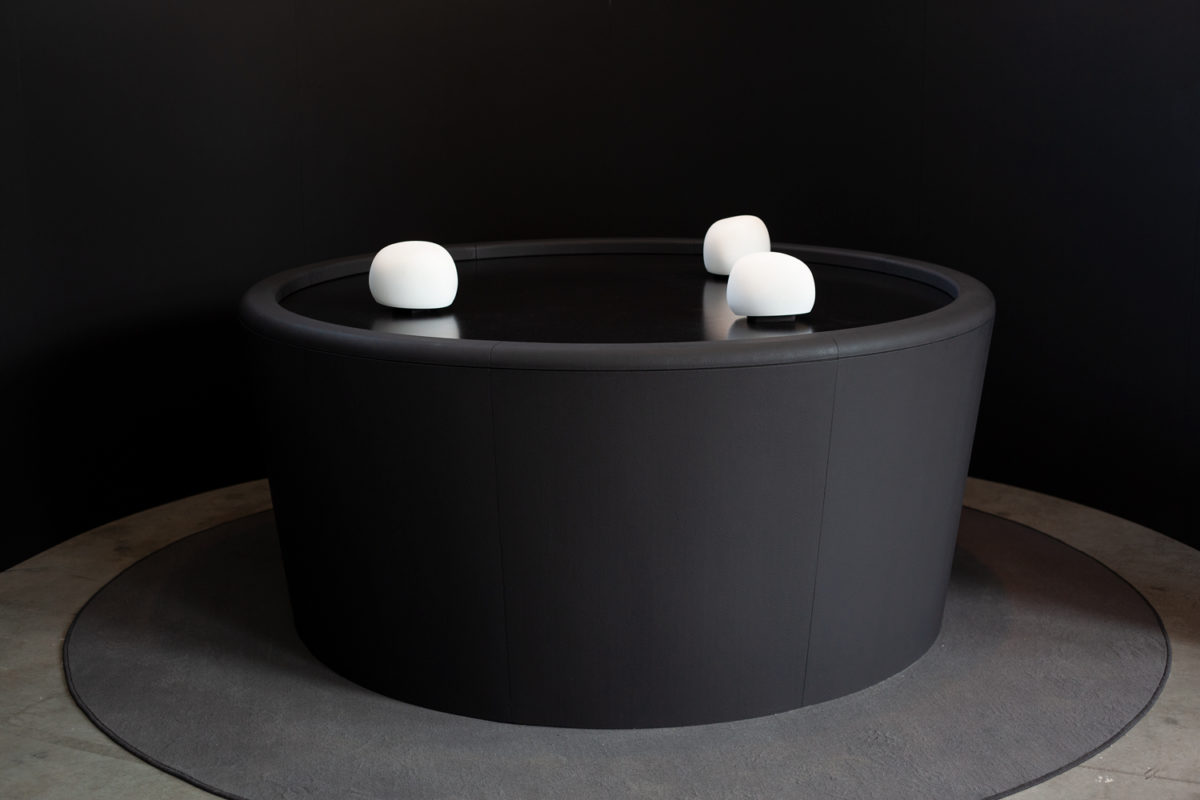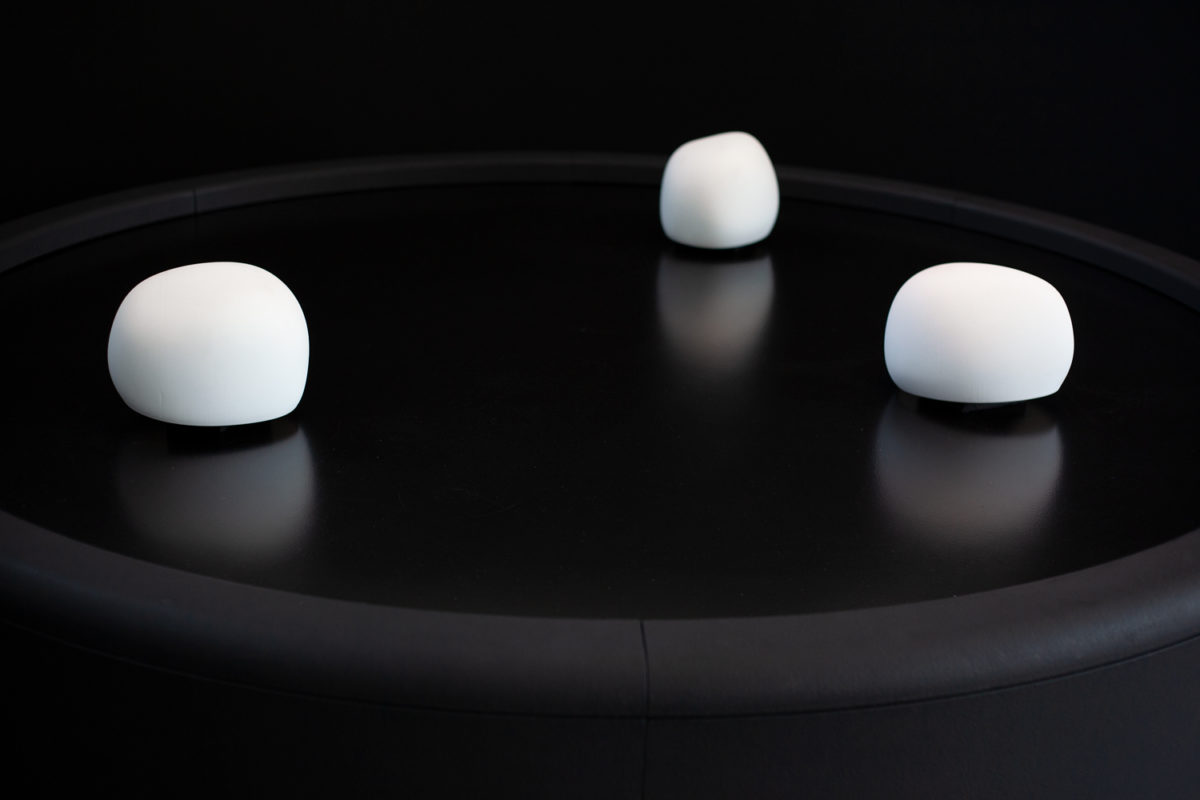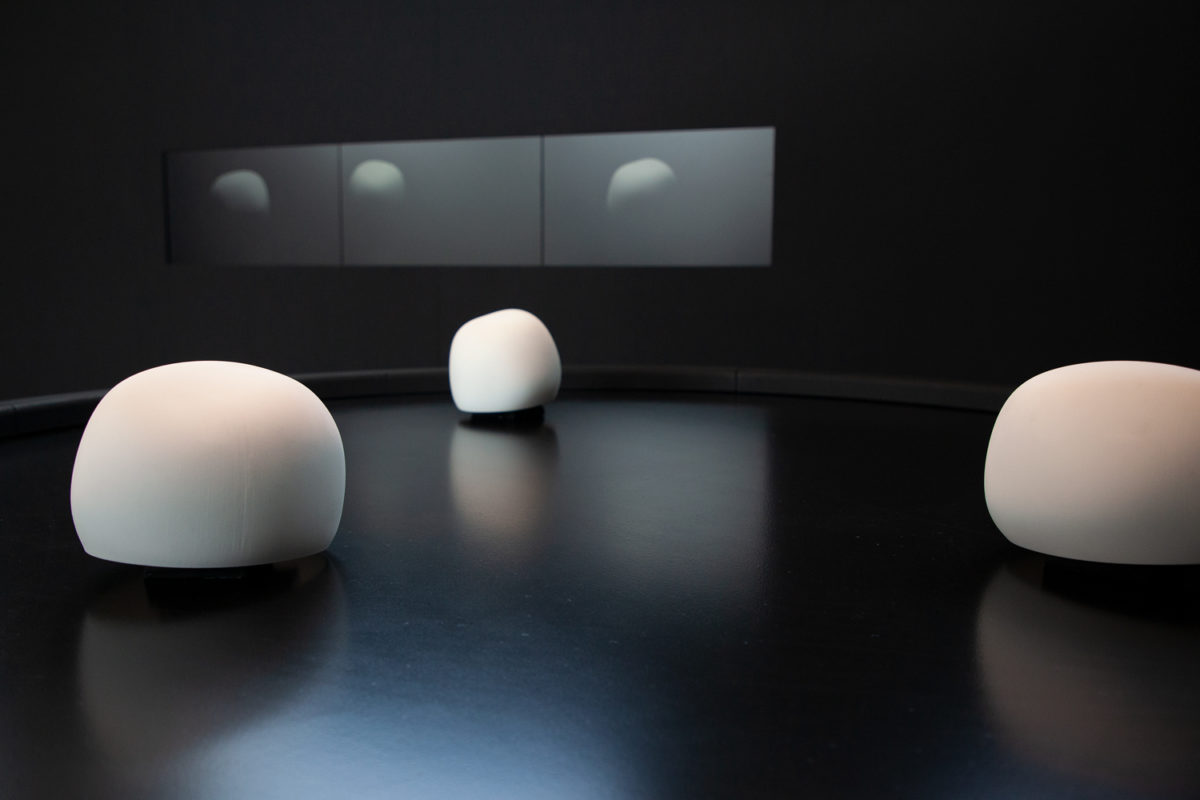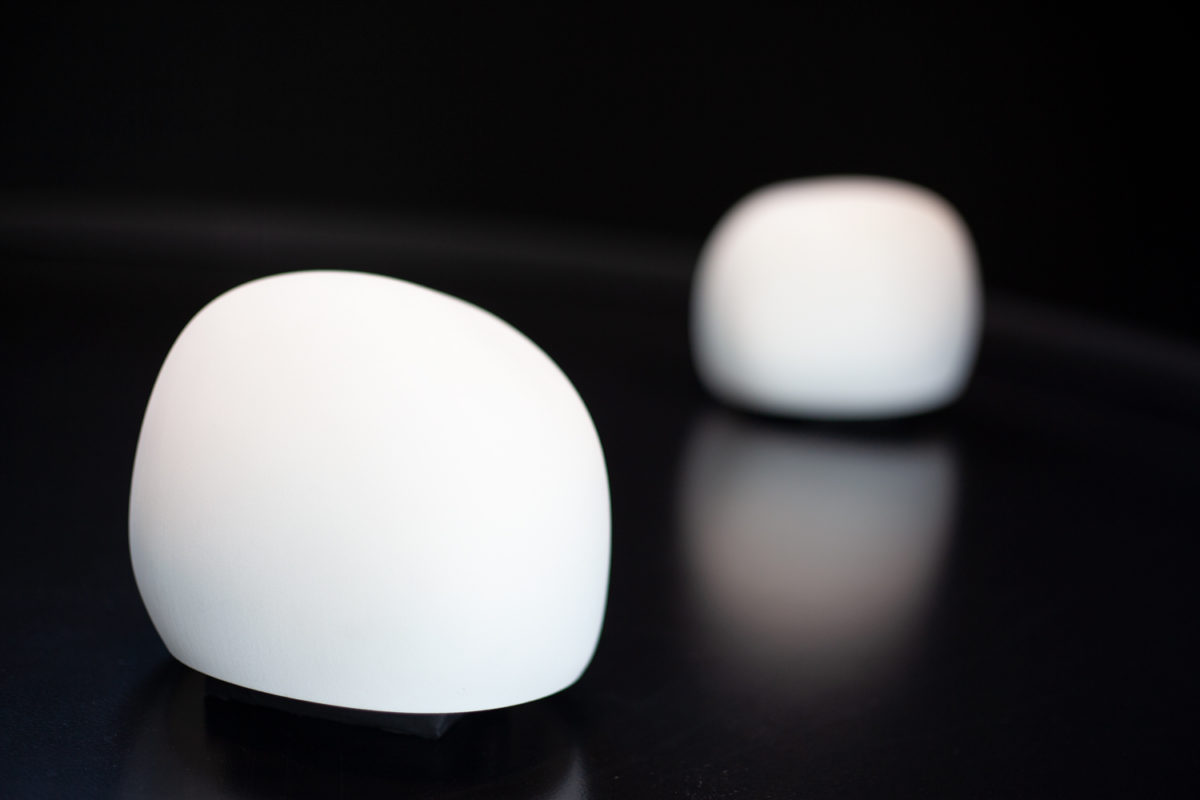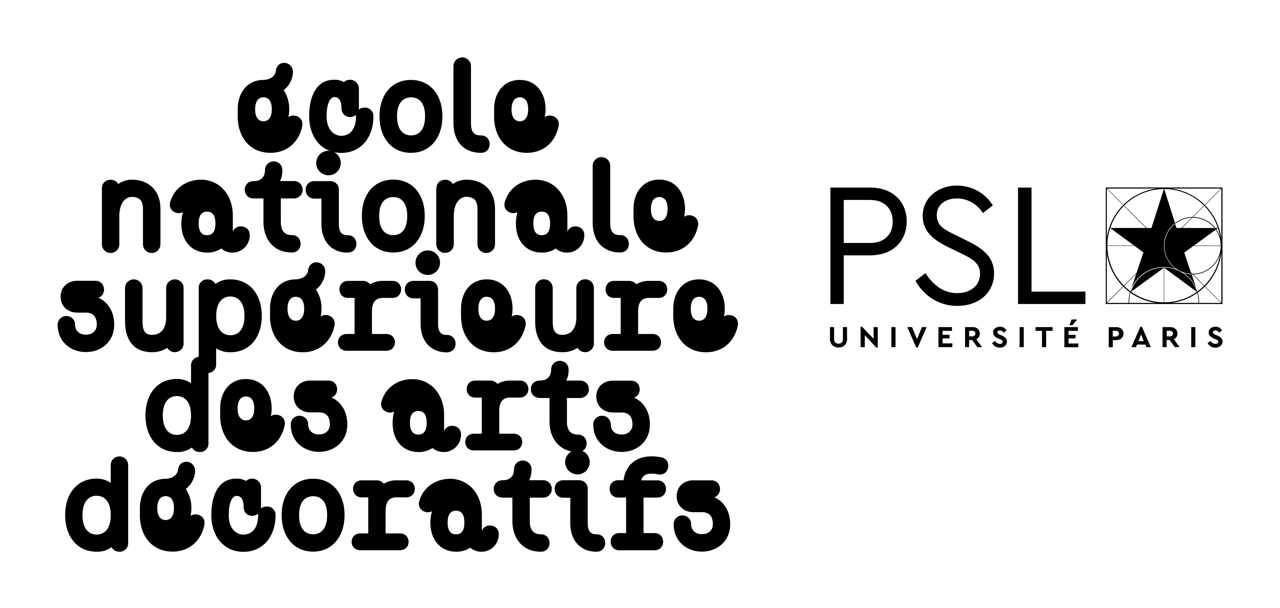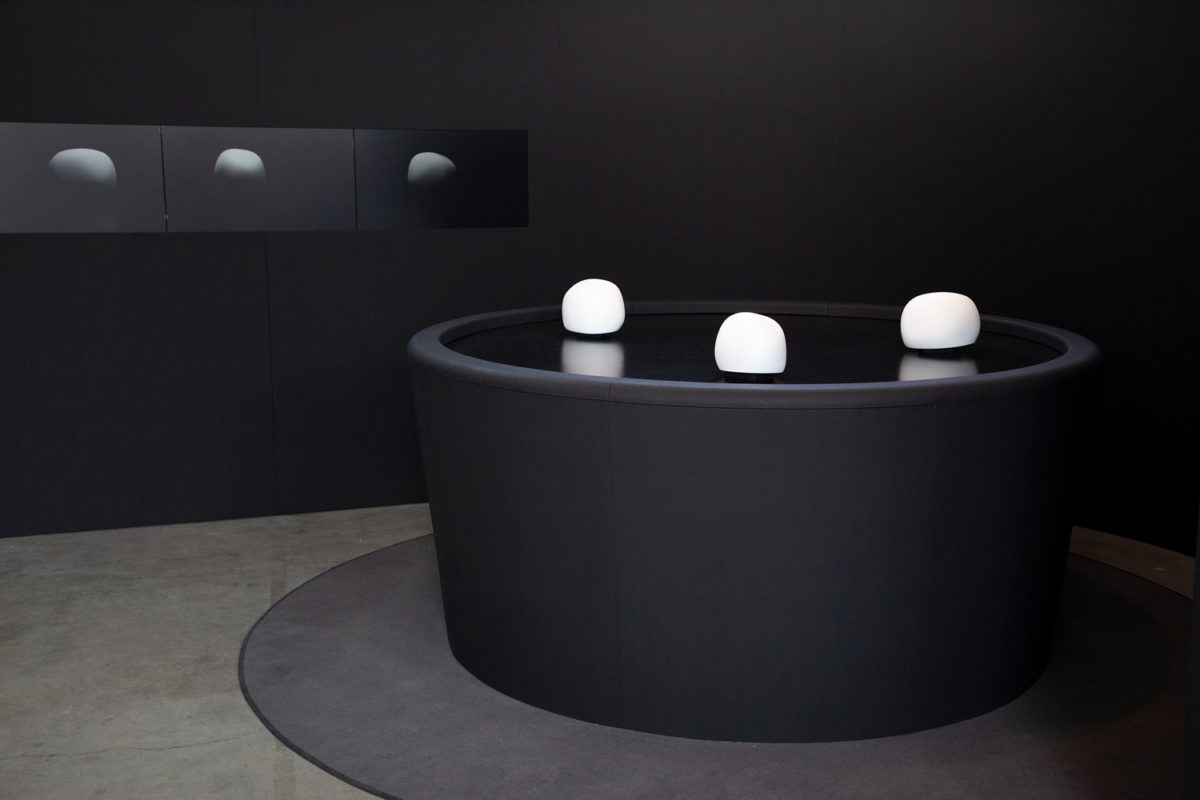
1. An experimental research project
The Appprentices is a design research project led by multidisciplinary teams from Orange Innovation and EnsadLab (the laboratory of the École des Arts Décoratifs, Paris).
Following an experimental approach that combines human sciences (notably anthropology and cognitive sciences), robotics and computer sciences (machine learning) with digital creation and innovation, this project explores new relational modalities between humans and our robotic environments enhanced by artificial intelligence techniques.
If our everyday objects might be empowered with abilities of movement and learning, action and reaction, and a behavioral dimension, how can we design new relationships with these robotic artefacts but also between them?
We have designed an instrumental “dispositif” to experiment with such “behavioral objects”, focusing on an original dimension that allows movement and sound to be strongly paired: vibration, vibratory space as a system of communication and interaction.
2. An instrumental dispositif
On the surface of a large circular base, three objects of the same abstract shape, having a mineral appearance, move irregularly, as if animated by an intention of their own as well as by a desire to relate to or even synchronize with their fellows. They are “behavioral objects” that play different scenarios together, trying to learn from each other through a program based on machine learning. Their movements appear even more rhythmic as they are sonified: embedded in the materiality of these objects – their motorization, as well as the noise of their movements – these sounds are converted and amplified by the vibratory space of the base to generate an almost-musical sound environment, destined to be shared by the objects and by the audience.
This apparatus is now to be regarded, as a whole, as an instrument. If the movements and rhythms of the objects are initially played autonomously, the edge of the scene also offers a space for percussion: breaking with the autonomy of the system, the public is invited to interact with them by producing vibrations with their fingers on the edge of the base.
For the exhibition, this dispositif can be experienced either via a video, playing the sound of the real objects amplified by the base, or during dedicated demo sessions, where it is also possible to interact with these robotic objects.
3. Design of agency
ln the age of the growing robotization of our societies and the need to consider the agency of non-human actors, The Appprentices proposes to experience behavioral objects, to share the perception of the “animacy” (intentionality and personality) of these artefacts, according to original relational modalities, within a vibratory space. lnvolving in a multidisciplinary instrumental research and creation approach, this project reveals methods and tools to build the field of “agency design” which questions the sensitive relations to our digital and physical environments.
Credits
A project designed by Samuel Bianchini, Elena Tosi Brandi and Hugo Scurto with the collaboration of Franck Weens, Corentin Loubet and Jeffrey Becker, in the context of a research partnership between Orange’s Art Direction Nods team (Xdlab) and the Reflective Interaction research group of EnsadLab, the research laboratory of the École nationale supérieure des Arts Décoratifs (Université Paris Sciences et Lettres)
Interaction design: Samuel Bianchini, Elena Tosi Brandi and Hugo Scurto
Product design: Elena Tosi Brandi and Corentin Loubet
Sound design: Hugo Scurto and Victor Audouze
Computer programming of the machine learning: Franck Weens with the collaboration of Hugo Scurto
Robotic engineering: Colin Bouvry
Video production: Frédéric Mit with the collaboration of Anastasiia Champeau
Set design production: Kilian Connan with the collaboration of Alexandre Kouklia
Acknowledgements: Olivier Bienz, Didier Bouchon, Édith Buser, Sarah Chazalette, Camille Dauhut, Pierre-Yves Dougnac, Jean François Dubernard, Serge Foutrier-Bielakoff, Jules Françoise, Jean-Philippe Lambert, Annie Leuridan, Emmanuel Mahé, Joséphine Mas, Marc Milelli, Jean-Philippe Millerat, Chantal Mougin, Christophe Pornay, Emmanuel Tibloux, Thomas Trayssac, Adèle Roy, Lucile Vareilles.
The elements of the scenography were produced at the Grange, a temporary place of occupation supported by Plateau Urbain.
The objects were made with the support of Sculpteo.
